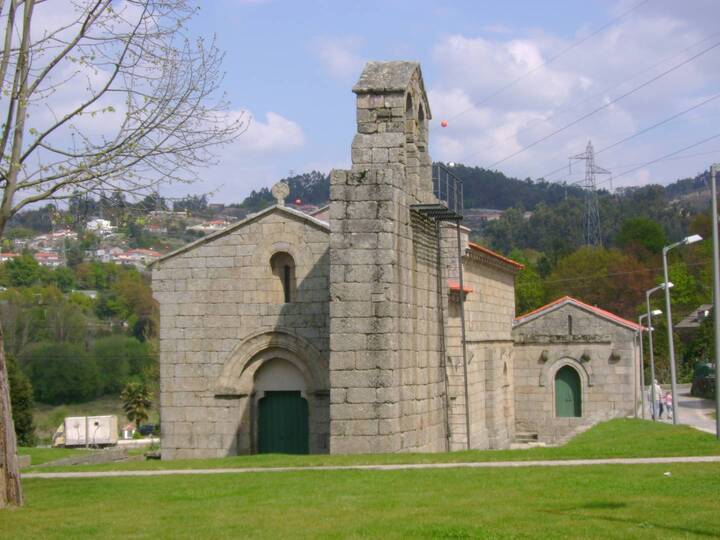With origins from at least the 11th century, as evidenced by the sepulchral inscription of Galindus found in the cemetery, the church of Santa Cristina de Serzedelo is a characteristic example of rural Romanesque in the municipality of Guimarães. The temple we see today dates from the 13th century, and would have been part of a monastic structure, probably Benedictine, of which we know little, but which had extensive properties and income in the area that today corresponds to the parish of Serzedelo.
The temple, with a longitudinal plan, is marked by the narthex for funerary function, whose construction was not much later than the primitive Romanesque church, since it maintains the same architectural characteristics, specifically the corbels. On the outside, the large wall that supports the bell tower stands out, recalling the role that the bell played in marking parish life. There is also a second funerary chapel built in the 14th century and which today serves as a sacristy. The portals, quite simple, have similarities in the decorative language with that of the Church of São Miguel do Castelo.
Lighting is provided through openings above the axial doorways, in full archivolt, in the side facades, above the triumphal arch and at the top of the apse. The facades are gabled, the narthex and the nave are crowned with crosses and in the main chapel with a flowered cross.
As the 14th century progressed, the monastic structure began to decline, which led to it being converted into a Collegiate Church in the 15th century, and at the beginning of the 16th century it became a Parish Church, so that, shortly after, it became part of a new Commandery of the Order of Christ.
On this route and more precisely in the 16th century, the interior of the church would be covered by a large set of mural paintings, where different representations can be found, such as the “Coração da Virgem”, the “Martírio de S. Sebastião”, S. Brás, Stº António and the “miracle of S. Martinho”, but where the representation of the Annunciation is presented as one of the highest artistic quality.
In the 17th century the Encomienda would pass into the hands of the Counts of Ericeira, attributing the initiative of the execution of the coffered ceiling of the Main Chapel to the IV Count, D. Francisco Xavier de Menezes.

 Guimarães, Northern Portugal
Guimarães, Northern Portugal














